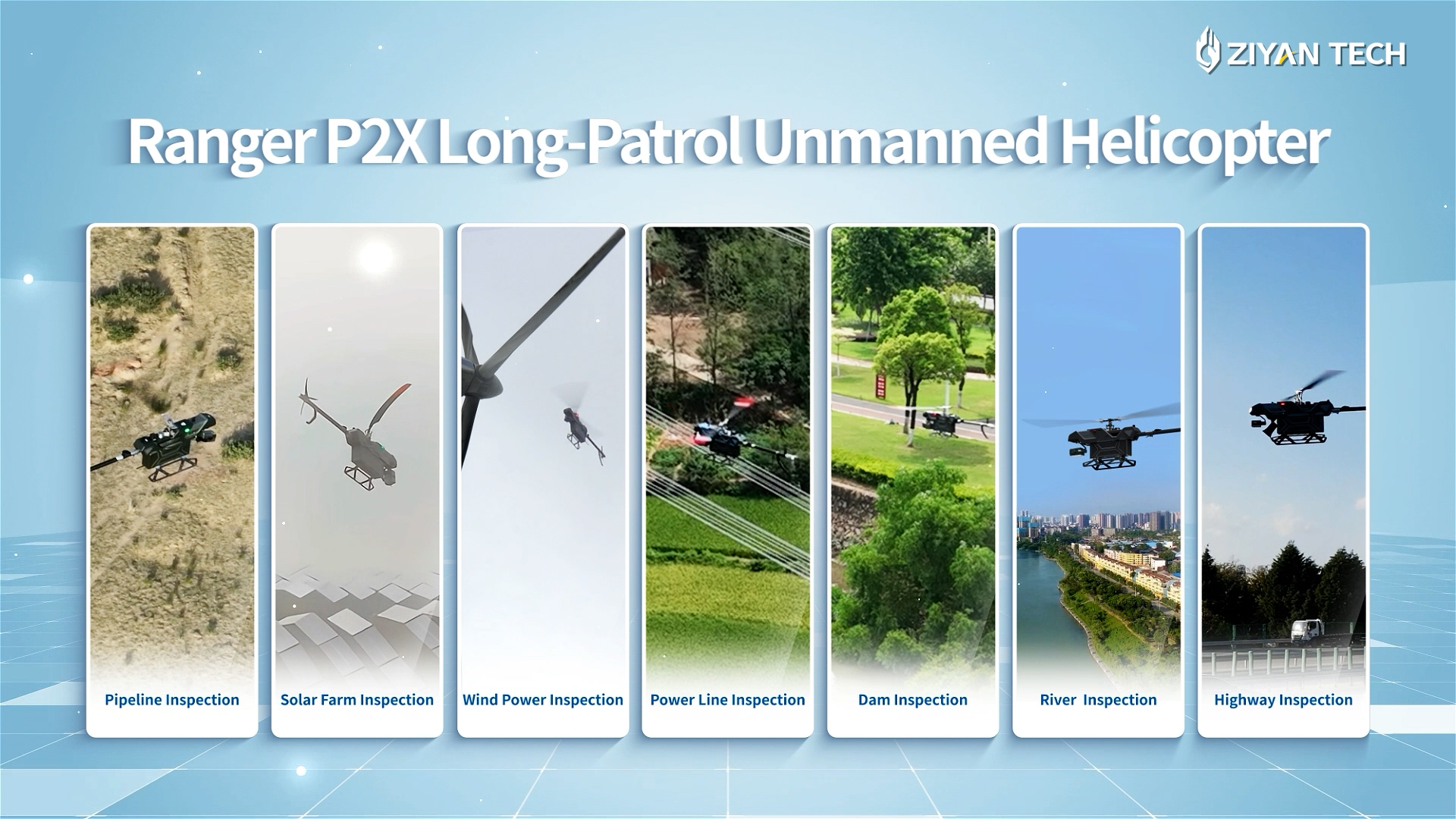A common question in the UAV field:
| What differentiates an electric unmanned helicopter from conventional drones?
| Why are these platforms gaining traction among government and enterprise users?
To clarify:
An electric unmanned helicopter is a vertical take-off and landing (VTOL) aircraft that operates without an onboard pilot, powered entirely by electric propulsion systems. It combines the aerodynamic advantages of a traditional helicopter with the efficiency and low-maintenance benefits of electric energy.
Professionals across industries—from public safety to critical infrastructure—are turning to electric UAV helicopters for several compelling reasons:
Extended flight time, often reaching up to 90 minutes per mission
Vertical take-off and landing capability enables flexible deployment with no need for runways
Robust payload support, ideal for sensors, cameras, or cargo
Stable hovering performance, essential for precise data capture and monitoring
Simplified maintenance, with fewer mechanical components compared to fuel-powered systems
Environmentally friendly operation, with low noise and zero emissions
Electric UAV helicopters are already deployed in a wide range of practical and high-stakes scenarios:
Providing persistent aerial oversight in remote or difficult-to-access areas.
Rapid deployment in disaster zones or wilderness areas to locate missing persons.
Enabling close-range, high-resolution monitoring without human risk.
Operating reliably over water and under challenging wind conditions.
Delivering accurate terrain and infrastructure data using LiDAR or imaging payloads.

Compared to traditional fuel-based drones, electric unmanned helicopters offer the following benefits:
Reduced operating costs through electric charging
Decreased downtime due to fewer mechanical failures
Quieter operation—essential in urban or sensitive environments
Better suitability for clean energy and environmental missions
These advantages make electric UAV platforms not only more sustainable but also more practical for long-term operations.
Electric unmanned helicopters are becoming essential tools for:
Government security and defense agencies
Emergency response and public safety departments
Energy and utility companies
Surveying, mapping, and environmental agencies
Our clients have successfully used our UAVs to:
Monitor national borders
Deliver critical supplies to isolated communities
Detect anomalies in utility infrastructure
Conduct urban mapping after natural disasters
Electric unmanned helicopters are no longer experimental technology.
They are dependable, effective, and mission-ready platforms actively supporting real-world operations today.
If your organisation seeks reliable, scalable, and eco-friendly aerial solutions, it is time to consider what electric UAV helicopters can offer.
Q: How does this differ from a quadcopter drone?A: Helicopter-style UAVs use a main rotor, enabling more lift and stability. They are generally more capable in wind and offer greater payload flexibility.
Q: What is the typical flight time?A: Most models provide between 60 to 90 minutes of flight time, significantly outperforming standard quadcopters.
Q: Are payloads customisable?A: Yes. Our platforms are modular and support a variety of sensors, imaging devices, and cargo options.
Q: Is the system user-friendly?A: Absolutely. While designed for professionals, our ground control stations are intuitive and easy to operate.
Q: Where can I learn more or request a demonstration?A: Please visit our UAV product overview page or contact our team directly.




Small and Medium-sized UAVs
Industry-Proven UAV Solutions
Full-Customized Services
Flight Training Services
